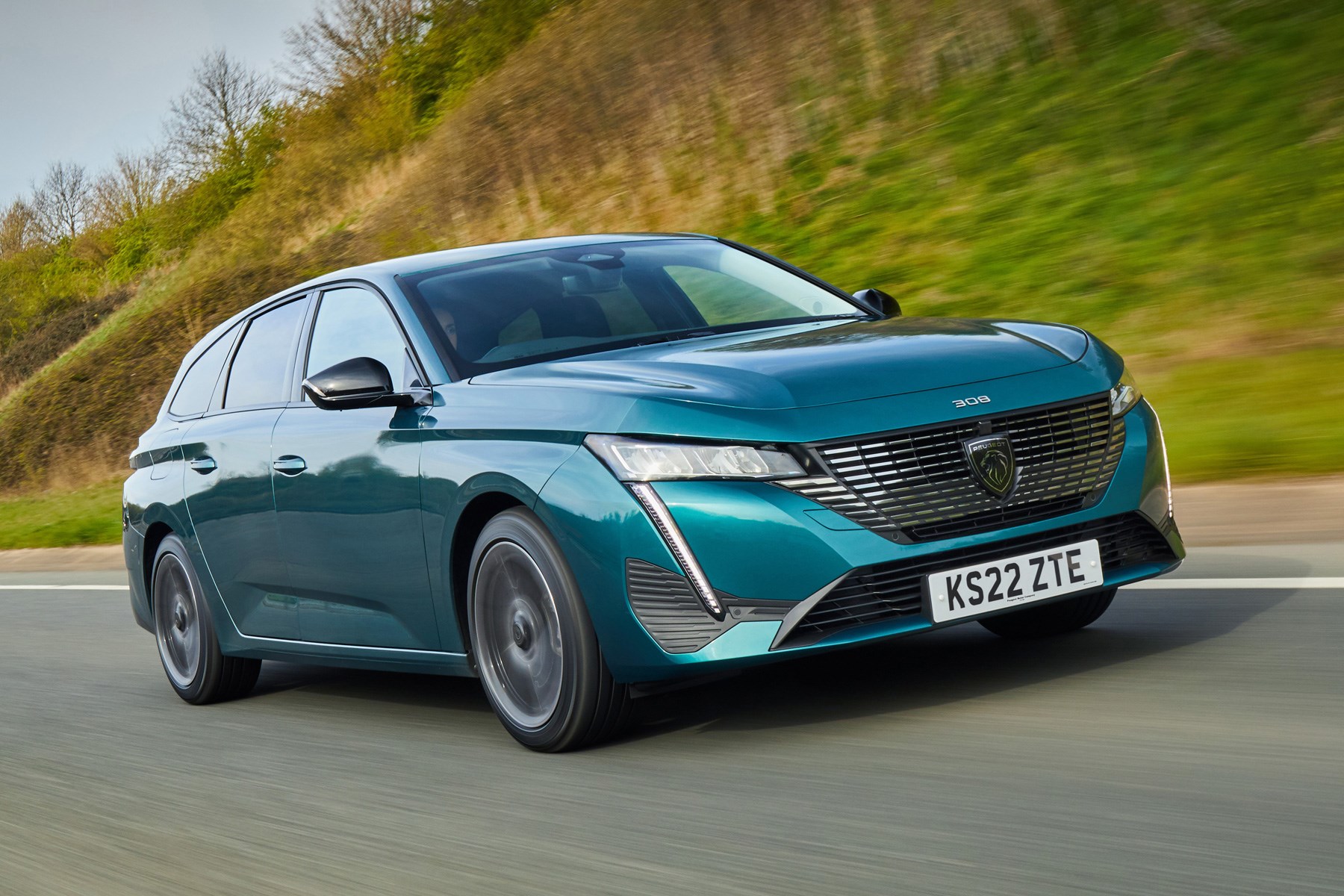► Great interior, clever infotainment system
► Hybrid powertrains offer good performance
► 308 driving position is rubbish if you’re tall
Peugeot is going great guns at the minute. The company has shaken off the fusty image it curated at the turn of the 21st century. Now, it’s churning out interesting, quality vehicles that give leading family car brands like Volkswagen and Ford a run for their money – and muscling into our list of the best hybrid cars 2023.
Peugeot offers the 308 with a good range of engines, including an eager 1.2-litre petrol, an economical 1.5-litre diesel and two plug-in hybrid powertrains. There’s even a pure-electric model on the way.
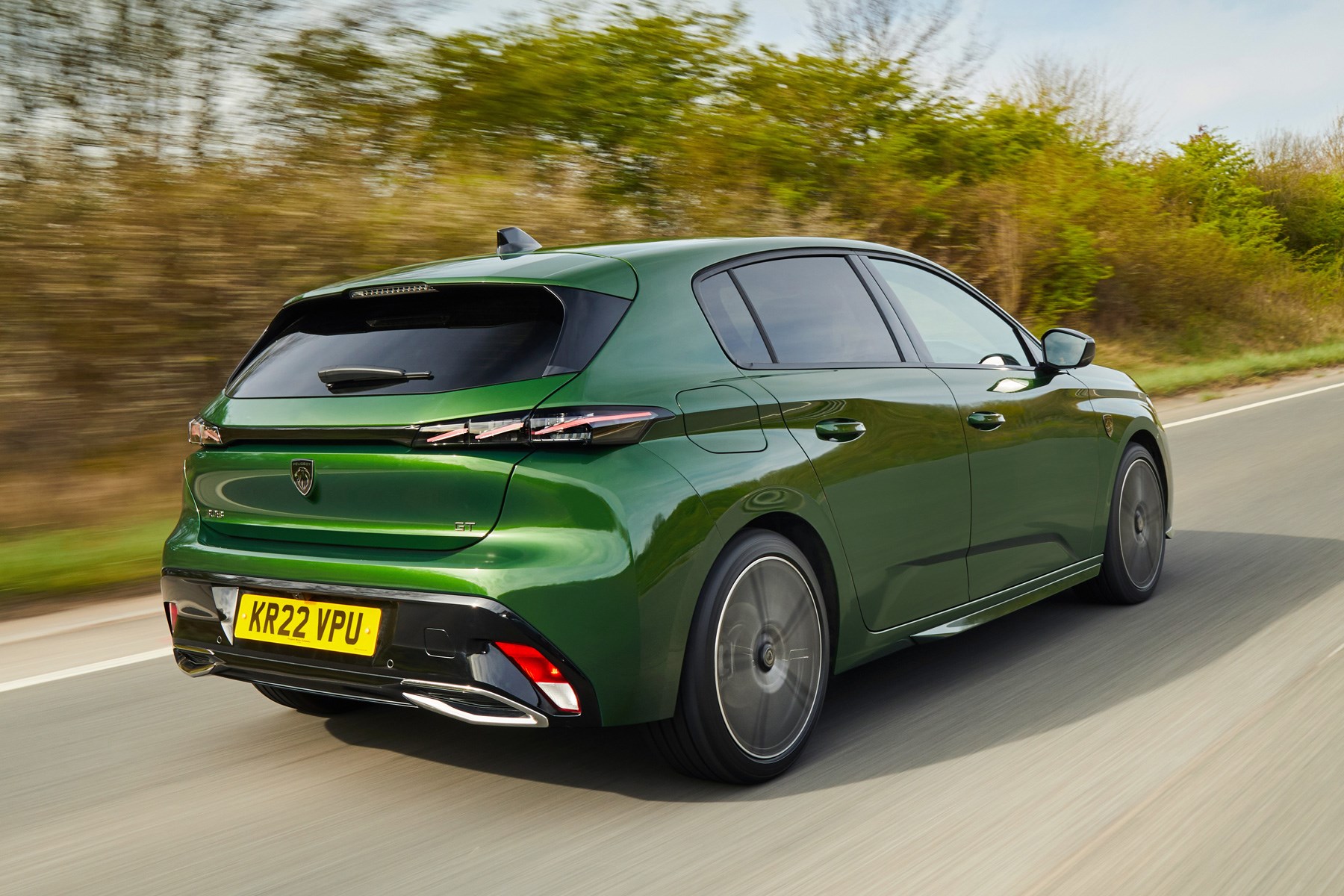
It also looks great, the interior is well-designed and Peugeot’s new 10-inch infotainment system is up there with the best in the business. However, after spending some time behind the wheel, we found a couple of foibles that could affect the car’s appeal for a lot of buyers.
You can’t leave us hanging there. Spit it out
Fine. I was planning on easing into the criticism gently, but I’ll get the worst of it out of the way now. The 308’s driving position is appalling if you’re any taller than five foot ten. The seat is mounted far too high and the steering wheel sits way too low. The wheel is also too small, which makes it difficult to see the gauge cluster. As I shall now explain.
If you raise the steering wheel up to its highest setting so it’s a comfortable height for your shoulders, the upper rim completely obscures the dials and you can’t see how fast you’re going. Try explaining that one to plod after blazing through your local town at 50mph.
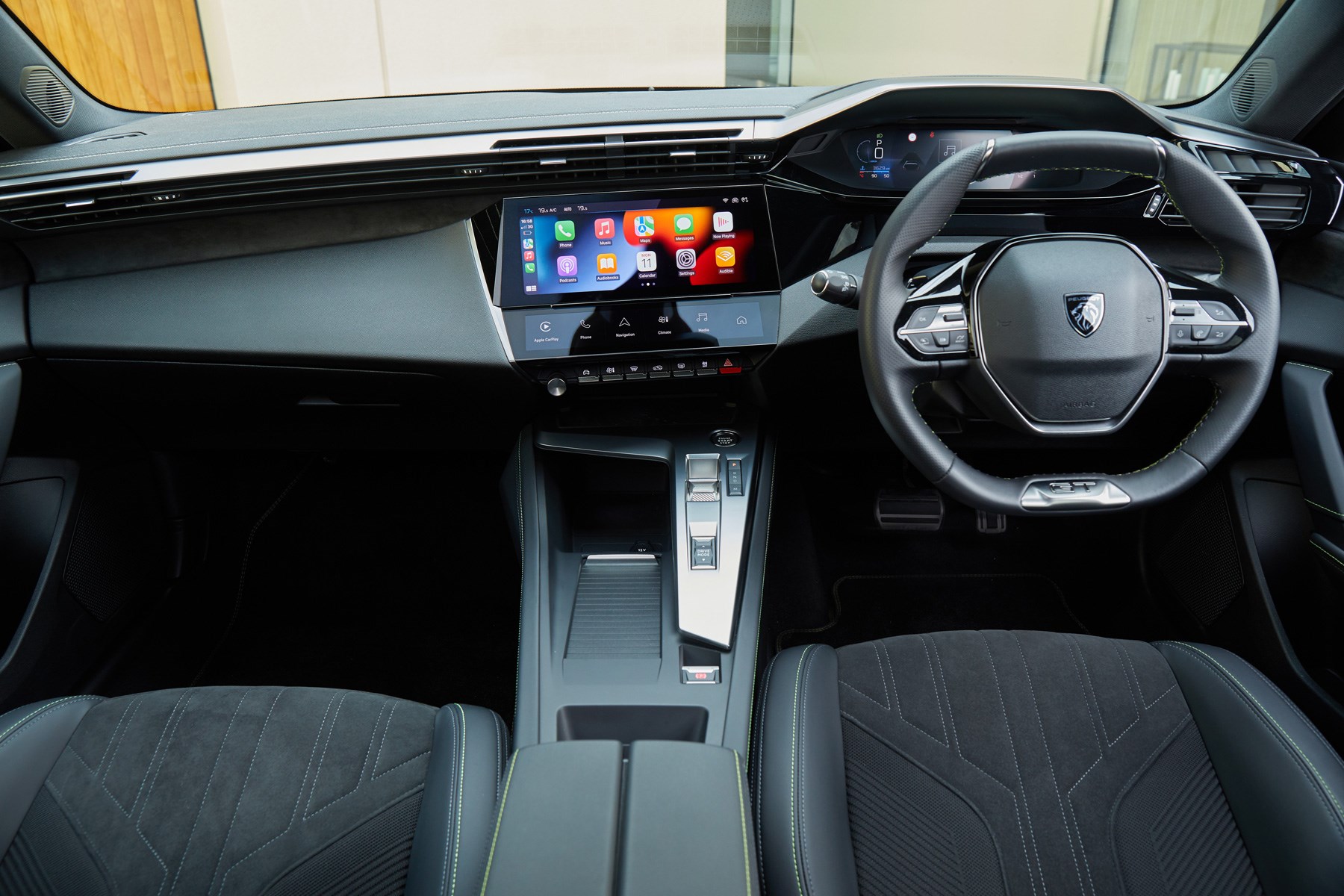
This forces you to adopt a very unergonomic high seat, low wheel driving position, which throws up a whole different set of problems. If you brake while navigating a junction, for example, your hands clatter into your knees which stops you from getting around the bend. Infuriatingly, I couldn’t find a happy medium between the two extremes.
Sounds like this is your fault for being a strange shape
That’s entirely plausible. But there are plenty of folk shaped like me that will run into the same problem – so my biggest piece of advice is to negotiate a good test drive before you sign on the dotted line to make sure that the Peugeot 308’s cabin fits your body.
The rest of the 308’s interior is great. Quality is excellent, with lots of soft-touch materials, sturdy switchgear and fancy fabric trim strips for the dash. The infotainment system is a corker, too. The screen is as crisp and fast as a modern smartphone, and there’s a strip of five customisable shortcut buttons mounted on a dedicated panel below to make it easier to navigate the unit’s plethora of functions.
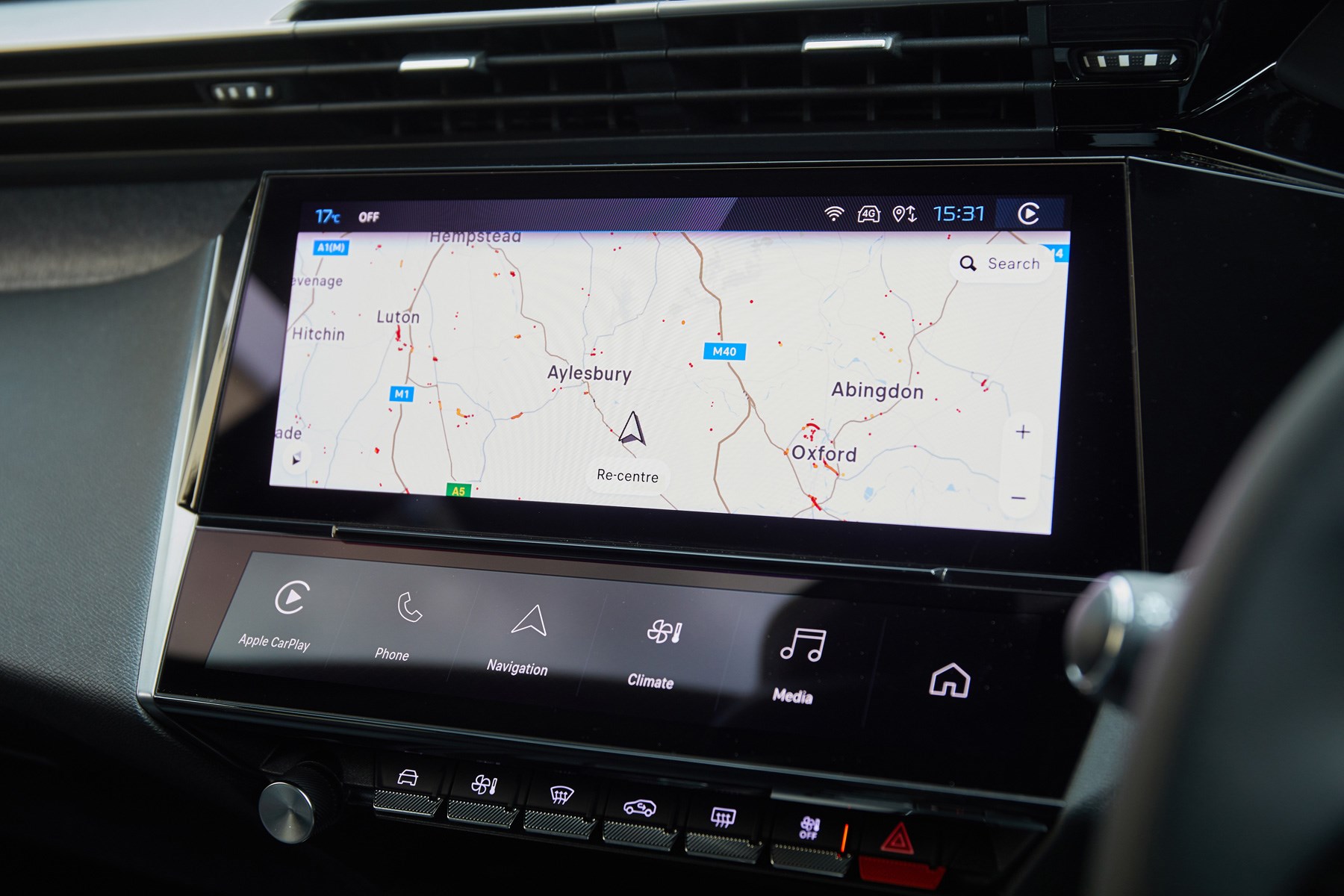
Peugeot calls them “i-Toggles” and they can be programmed to jump to almost any function on the touchscreen that your imagination can conjure. If you wanted to, you could have one that tunes the stereo to Finnish folk metal, one that whacks the air-con on full and another that programmes the sat-nav to your local livestock market.
Clever stuff. But what’s it like to drive?
Honestly? It’s a bit hit and miss. The suspension works perfectly fine when you’re cruising on a smooth A-road or a motorway. But, chuck the Peugeot 308 down a twisty back road, and chinks start to appear in its armour.
For starters, it’s too stiff for its purpose. In my eyes, the Peugeot 308 isn’t a sporty car. You don’t get as much feedback as you do from a Ford Focus or Mazda 3 and, with that laid back driving position, it should have been pitched as a comfy cruiser rather than a B-road barnstormer. But it’s sprung like a hot hatchback.
The dampers don’t have a lot of travel and they can’t react quickly to changes, which means the wheels crash into potholes hard rather than easing into them gently. The problem gets worse if you’re on a bumpy corner, where the stiff suspension will unsettle the car. It isn’t dangerous, but it doesn’t encourage you to drive spiritedly.

Peugeot has also fitted the 308 with very quick steering in an effort to make the car feel agile. The effect is a combination of the low gearing on the rack and the tiny hexagonal steering wheel, which only requires a quarter turn to navigate most corners.
The setup works very well on the 1.2-litre petrol model because it’s the lightest model in the line-up. It only weighs 1,288kgs, so it turns in keenly. The plug-in hybrid models aren’t quite as sharp because of the added heft (300kgs in total) of the hybrid system. Don’t get me wrong, it’s a lot sharper than rivals such as the Volkswagen e-Hybrid and the Mercedes A 250 e – it’s just not quite as good as the pure-petrol version. But these are the sacrifices we make for low company tax rates, I suppose.
There’s also a slightly counter-intuitive benefit to the PHEV system. It smooths out the ride a little and helps to keep the car settled over uneven surfaces. The lighter petrol model is constantly moving under you if you’re tackling a B-road with gusto.
Tell us more about the 308’s engines. What’s to like?
The 1.2-litre three-cylinder petrol unit is easily the best unit in the current line-up. It’s a willing little unit, serving up 128bhp and 170lb/ft of torque, which is just enough to make the 308 feel nippy. It’s also very refined for a three-cylinder, and it even sounds good when you set loose your inner hooligan and mash the throttle through the firewall.
The 1.5-litre diesel is, well, a 1.5-litre diesel. It’s a bit rattly at idle, although it smooths out nicely once you’re up to speed. Peugeot says it develops 129bhp and 221lb/ft of torque, but it never feels as fast as that torque figure would suggest. In-gear acceleration is lethargic, even if you put the engine in sport mode.
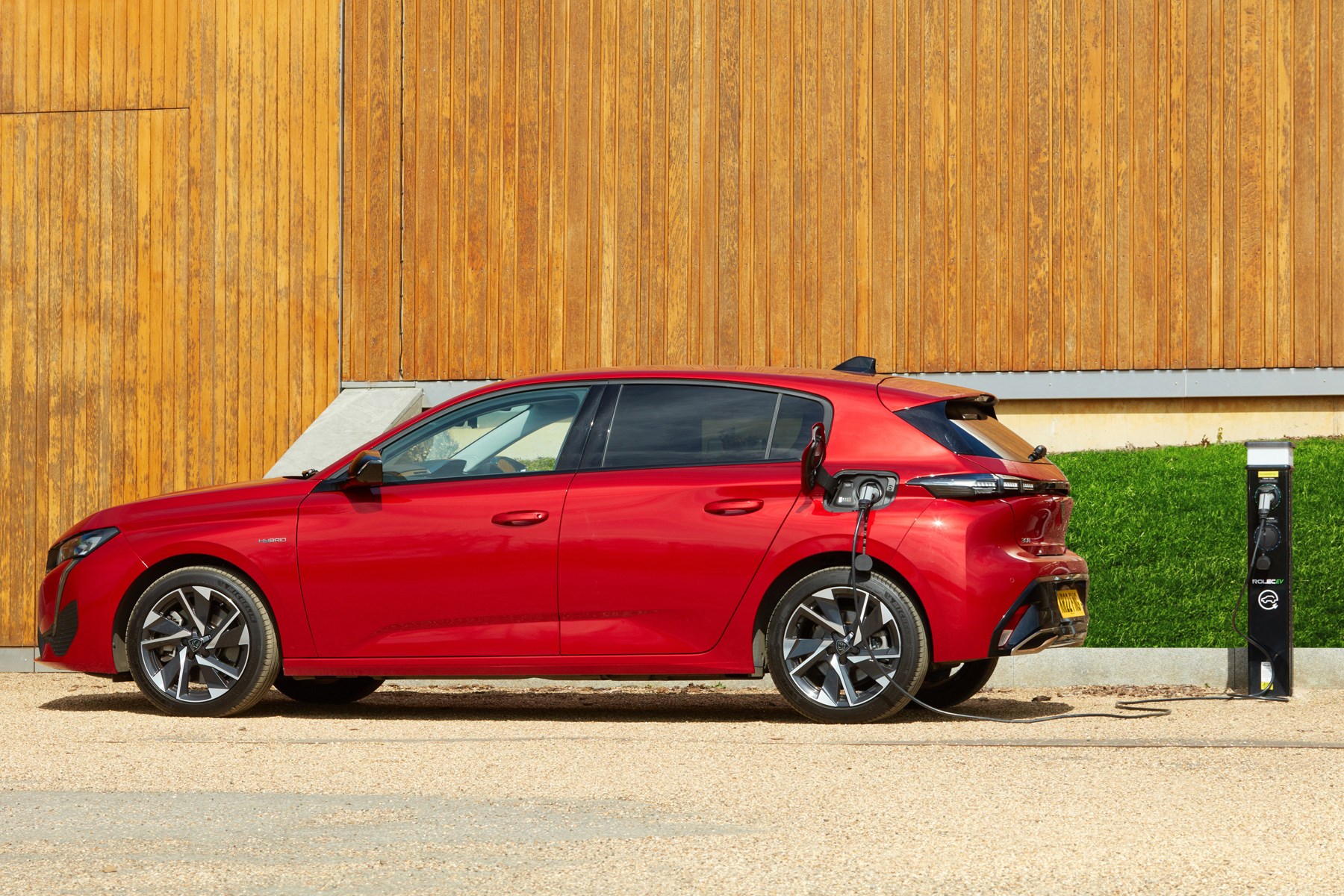
The 308’s pair of plug-in hybrid powertrains are refined when driven sensibly, but they’re writing cheques they can’t cash in terms of efficiency. Both are based on a 1.6-litre four-cylinder petrol engine and Peugeot claims they’ll achieve upwards of 200mpg on the WLTP combined cycle. Spoiler alert: they won’t.
Drive with a light foot and you’ll average more than 50mpg – especially if you’ve got a full battery. The powertrain can tootle around on electric power alone for 35–40 miles, meaning you’d likely not need to burn a drop of fuel during your morning commute. However, if you run the battery flat you’ll struggle to achieve 30mpg, because the petrol engine needs to work hard to haul around the dead weight of the hybrid system.
If you don’t plug them in, the hybrids will keep the engine turning to charge the battery. This burns more fuel and negatively impacts your mpg figure. To be fair to Peugeot, we did have that setting engaged when we tested the car, but that’s only because the previous journalist had left it with a flat battery.
Make sure to plug them in, then. More importantly – are they quick?
Sort of – but like everything with the Peugeot 308, there’s a caveat. You have a choice of two power outputs. The cheaper model produces 178bhp, while the more expensive variant develops 222bhp. The former is priced from £33,035 while the latter starts from £37,235, as it’s only available with Peugeot’s most expensive GT and GT Premium specifications.
Both versions have the same 236lb/ft torque output, which means the pricier model hardly feels any faster than the cheaper one. The performance figures back up our observations, as the 222bhp PHEV is only one tenth of a second quicker from 0–62mph than the 178bhp model. Is that really worth the extra cash?
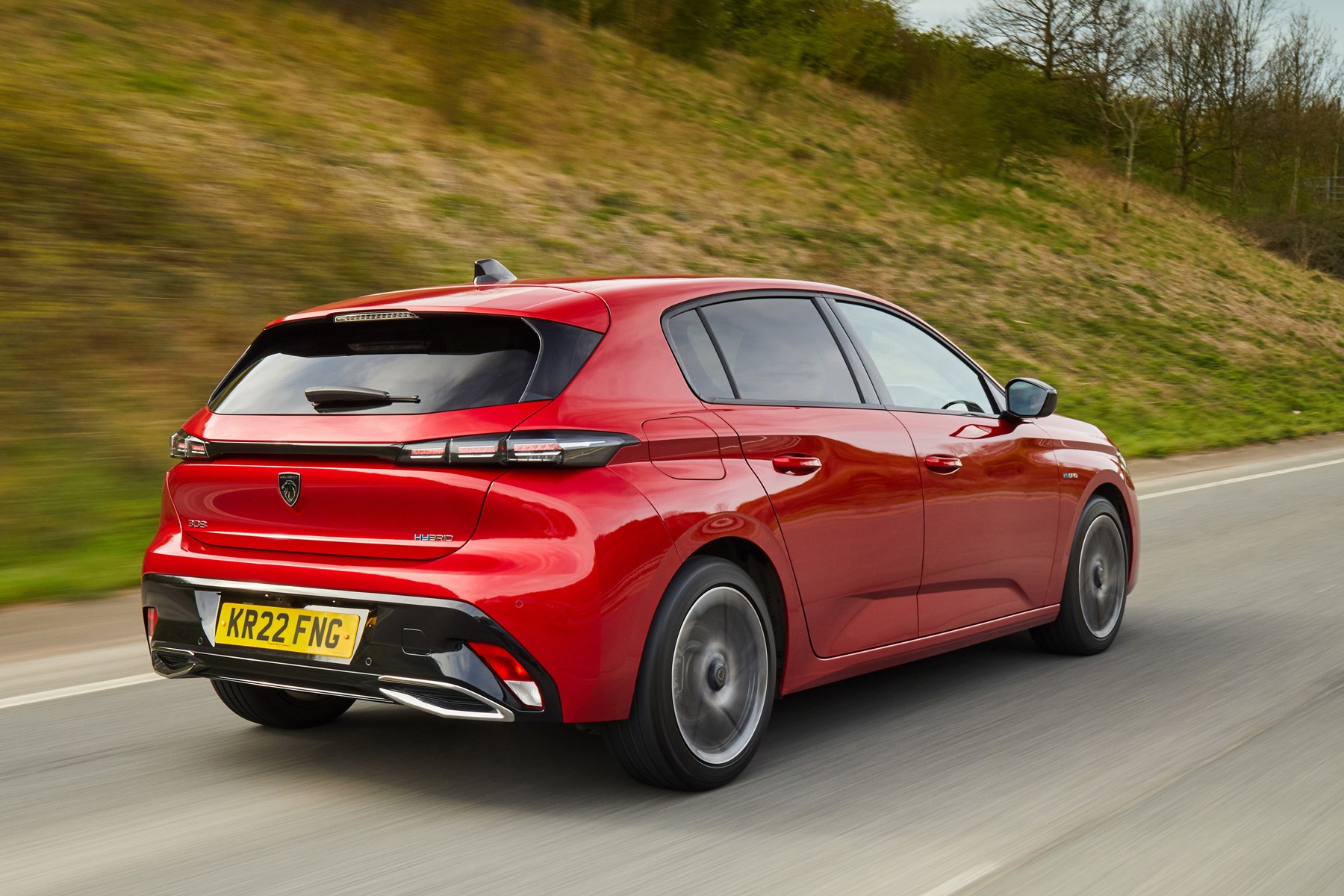
Neither like being hurried, either. Plant the throttle hard to overtake, and there’s a noticeable delay while the eight-speed automatic gearbox figures out which cog it needs. Then there’s another pause before the electric motor kicks in. You wait a total of two seconds between pressing the throttle and accelerating, by which point your window of opportunity has passed. The remedy is to drop back and roll into the throttle gently.
But wait. Just before you fill my inbox up with “I told you so” quips about the drawbacks of electrified petrol engines, consider that both 308 PHEVs have low Benefit-in-Kind rates of eight percent, which makes them a very tempting prospect for company car buyers. Road tax is low, too, as their official CO2 emissions figures range between 24 and 30g/km.
What about boot space?
It’s good news here, because the 308 is one of the more practical cars in its class. The petrol and diesel versions have 412 litres of boot space with the rear bench in place, but that figure drops to 361 litres with the plug-in hybrid powertrain. The battery lives under the boot floor which eats up space.
Fold the bench flat, and the boot capacity of the non-electrically 308 swells to 1,323 litres. The PHEVs offer a maximum of 1,271 litres. That sounds like a big practicality penalty, but that’s before you consider that figure is still 34 litres more than you get in the pure combustion-engined Golf.
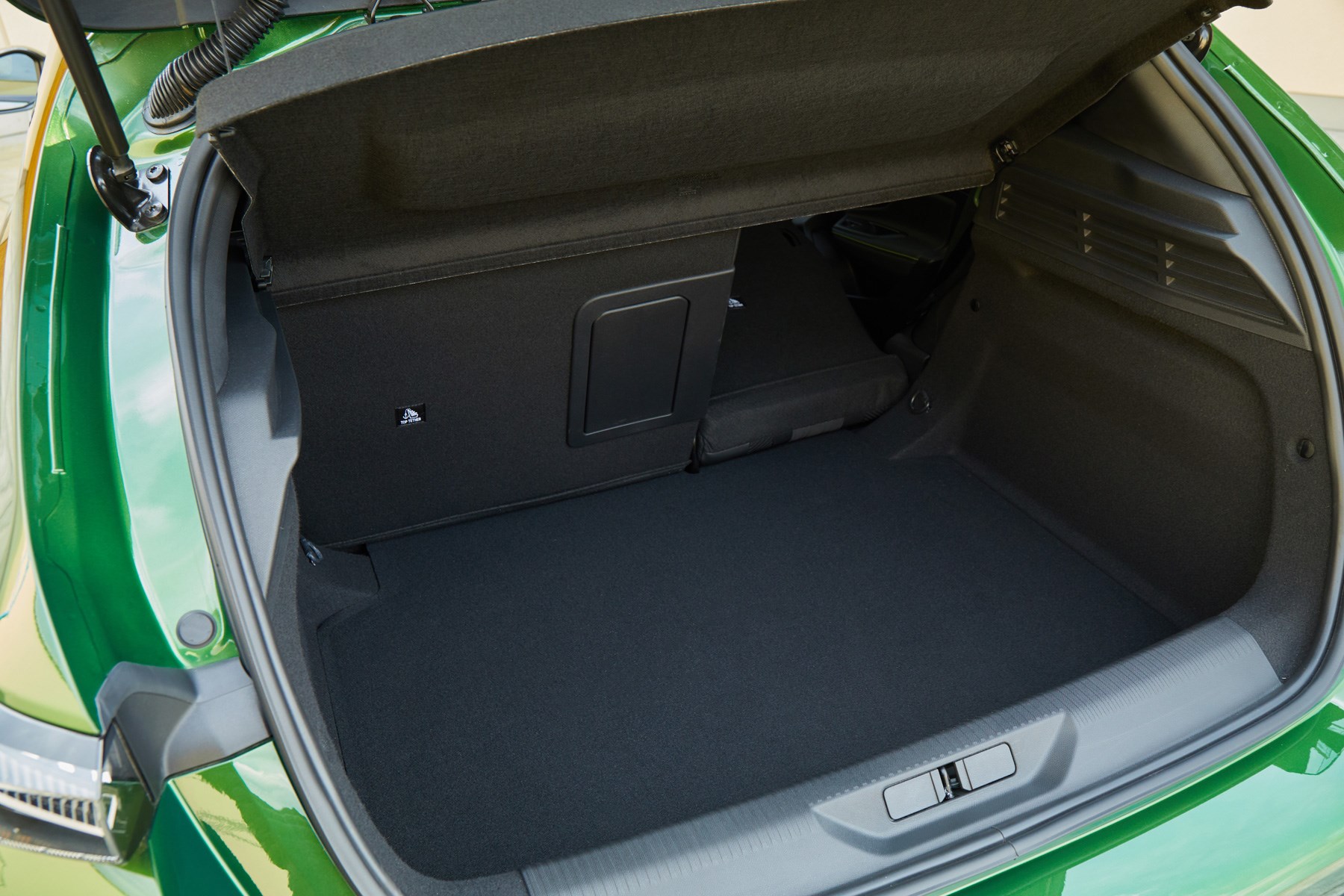
If you need the extra space, you can always opt for the 308 SW estate. It offers 608 litres of space with the rear bench in place and 1,634 litres with the seats stowed. It also has a longer wheelbase than the hatchback, which liberates a little more leg room for those in the rear and benefits the car’s ride quality.
Verdict
I’m forced to be less objective than usual with the Peugeot 308, as its suitability to your lifestyle is ultimately determined by your body shape and preferred driving position. I’m tall, so I couldn’t entertain the shapes the seat and wheel were contorting me into – and I hated not being able to see the gauges when I made myself comfortable. A shorter driver will probably find it easier to live with.
There are a lot of things the 308 does well. It has a huge boot, for example, and its build quality impresses. Peugeot’s new infotainment setup is also a huge step up over its previous systems and the i-Toggle widget bar makes it easy to operate all of the car’s cabin functions from the touchscreen.
There’s a good range of engines, too. The petrol is definitely the sweet spot in the line-up, but the PHEVs make a compelling argument for the amount of performance they offer and their low BiK ratings. They’re not as efficient in the real world as Peugeot claims, but the same can be said of most PHEVs systems.
We’re looking forward to driving the new electric model soon. With 250 miles of range and a 154bhp electric motor up front, it could leap frog the 1.2-litre petrol as the pick of the range.
